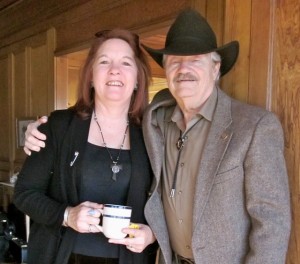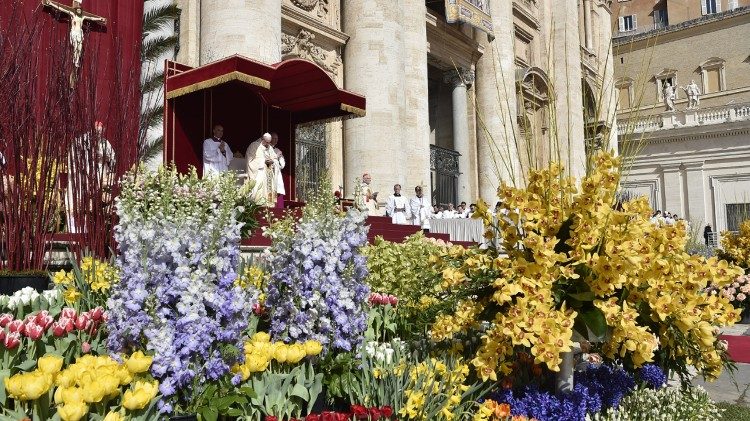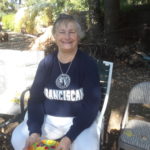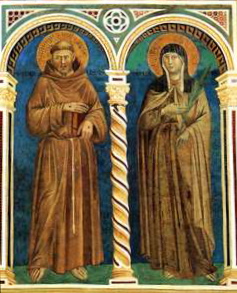MINISTER’S CORNER
 Hello once again all,
Hello once again all,
We are so close to Lent; it’s just amazing how time flies! I have some info to share and a page from Richard Rohr (shown later in this newsletter). In emails from international OFS I’ve been informed of our 2019 Annual Theme for OFS this year. {The Family in the different encyclicals and Catechism of the Catholic Church.}
Here are a few questions we’ve been asked to consider:
Why is it important to develop a relationship between your family and your local fraternity?
Do we have gatherings during the year with our families included? If so, what do we do there?
How can we strengthen this connection?
What actions can we take In 2019 to strengthen this family-fraternity connection?
Please consider these and any other questions or thoughts on this matter and come to share at our next gathering.
On a different note I’m not sure how many of you listen to POD casts on the internet but we’ve been blessed with a new one from Richard Rohr. It’s called Another Name for Everything. You can find out more from the Center for Action and contemplation. He also has daily meditations which can be downloaded to your computer or mobile device to listen to anywhere. If you’re interested, you can contact CAC.org for more info. As he allows us to share his meditations I’m including one here for your perusal and enjoyment.
I don’t know if you’re aware, but I have a love of words. After listening to this meditation I now am enjoying “Midrash”. Hope you will as well.
Peace and every good,
Debbie Wasche, OFS, Min.

 FRATERNITY DOINGS
FRATERNITY DOINGS
We gather on the third Sunday of the month at 517 W. 10th St. in Medford, OR in the Sacred Heart Parish Office Conference Room from 1:30-4:00ish.

From Our Spiritual Assistant
Patricia Mihalic Doyle, OFS/SA
THE WAY OF THE CROSS
In early March at our St. Rita’s Retreat I attended a pre-Lenten Day. Two of my friends were expected, but didn’t attend, so the day changed for me. (Acsa attended, and she and I will offer more thoughts from this Day at our March SFO.)
For our long break we were asked to be silent. Suggestions were given on what one could do during the break. It was going to be alone-time, I thought.
The sun was shining on this winter day so unexpectedly, so I went to pray at the outdoor Stations of the Cross. Tom and I, with our dogs, have enjoyed this path in the past.
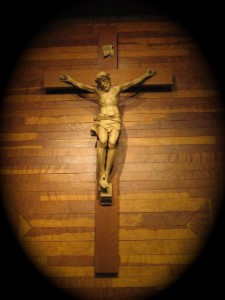
I had brought a couple of prayer items for any break time. One was The Way of the Cross by Archbishop (now Venerable) Fulton J. Sheen.
I had prayed the Stations with this booklet in the past. This time I found it very meaningful. I also found it was a special day of reflection for me.
In the front of the booklet Venerable Sheen gave two reasons for having this in print. The first was so that the stations “may enkindle in souls a flaming love for the crucified Christ.” The second was that “those who meditate on the great love of Our Lord for sinners will be kind enough to say a prayer for the author.” He dedicated his writing to Mary, Mediatrix of all Graces.
Fulton J. Sheen, his name came up at SFO last month. I mentioned his TV appearances – TV in black & white. We were grade-schoolers and watched with the elders. I remember how animated he was on TV. And what a teacher!
Before the break, responding to the thought given that God wants everything good for us, someone asked about diseases, etc., saying she had a difficult time with this.
After the break I was able to bring up something from this booklet. Venerable Sheen said, “There is only one way we can become exactly like our Blessed Lord, and that is by suffering.”
I have always been attracted to The Stations of the Cross for prayer, and walking the Stations one’s focus is aided by the artistry, unique in every church.
There are many versions of the booklet available. One states that it is “according to the method of St. Francis of Assisi.” We can relate to that!
Once again, we find ourselves in the Lenten Season. May we take the time to make the journey special. And, please say a prayer for Venerable Sheen.
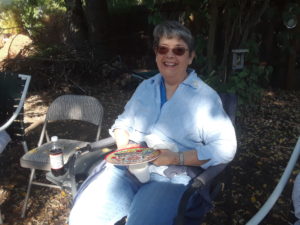
Poem by Candidate
Lois McWhorter
Forgiveness
In the cross
every wound is exposed.
In the cross
every tearing of
human flesh
from human bone,
every human suffering
in the darkness
is exposed to light.
Every life is a love affair with God.
Every one!
God shares our beds, our dreams,
our hopes, our disappointments –
lies intertwined with us
in the deepest places of our hearts.
The idea of sin can be a stumbling block.
It can be just as much ego
to go around saying, “I’m bad, I’m bad”
as “I’m great, I’m great!”
In the process of growing and living
we are a lot like babies learning to walk.
We fall a lot.
But unlike babies, we often
fall on others and hurt them
and yes they have within them
the capacity to take care of themselves,
and yes, others often fall on us.
But there is a coldness in only acknowledging this.
To recongnize the sacredness of the other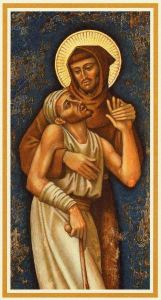
we have to acknoledge the harm we do,
the pain we cause,
but not to dwell on that forever.
We can too long hold onto that which
has been forgiven long ago,
and that is just another way
of being self-centered.
Sin is causing suffering.
Holiness is in acknowledging it
and experiencing regret.
Forgiveness is the bridge to wholeness.
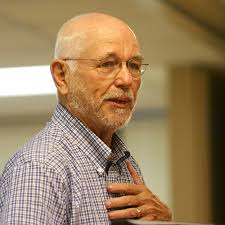 From Our Treasurer Hank Hohenstein, OFS
From Our Treasurer Hank Hohenstein, OFS
SPRING
Early spring is a delightful time of the year in the more moderate climates of Southern Oregon. And yes, it is in March and April that we celebrate some of the most significant times of the Christian calendar. We cannot deny the spiritual power of Ash Wednesday, Lent, Holy Week, Good Friday and Easter Sunday. However, for today, let us shift our gaze to the incarnational events of nature that surround us.
Here, at the lower elevations of Southwest Oregon we have had threats of a heavy snow, but we seem to receive only a few inches at any one time. The other day we had bare ground when we turned in for the night, but we awoke to four to five inches of snow. The day remained just above freezing so while the roads became clear, the snow lingered everywhere else. Little of our normal animal life was moving.
The Oregon junco  is a small sparrow-sized bird with colorful markings that winter in our neighborhood. In winter they migrate from higher elevations and thicker forests where the snow is much deeper and longer lasting. A few brave juncos were hopping about finding little food, they feed at ground level. From time to time in casual observation I noted they landed on the porch in search of a spare morsel so I decided that since the porch was covered and without snow that might be a good place to scatter some seed. So…
is a small sparrow-sized bird with colorful markings that winter in our neighborhood. In winter they migrate from higher elevations and thicker forests where the snow is much deeper and longer lasting. A few brave juncos were hopping about finding little food, they feed at ground level. From time to time in casual observation I noted they landed on the porch in search of a spare morsel so I decided that since the porch was covered and without snow that might be a good place to scatter some seed. So…
After ‘seeding’ the front porch and bench I retreated inside to watch. Within five minutes there were a few happy juncos pecking away and within ten minutes more than 20 were busy filling their crops. I did this late in the afternoon so they could roost all night with a full digestive tract and enjoy the warmth provided by digestion.
The next forty minutes of watching the small flock were joyously fruitful. Jesus, in Matthew (6) and Luke (12), taught us what to conclude from observing birds and ‘lilies’. St Francis teaches us how to watch and interact with birds and animals. To fully engage with fur, feather and fin folk Francis tells us to think of them as brothers and sisters and not some lower order. He admonishes us that no one likes to be on the receiving end and talked down to as a lesser being.
As one slowly leaves the role as the one residing at the apex of God’s creation, to place one’s self on a plane to communicate with other life forms a spiritual transformation occurs. We are able to begin to understand and enjoy the junco’s vocalizations and the hierarchical structure of the flock. We also better understand Jesus’ message in Matthew and Luke to guide us into Lent: ‘Do Not Worry’
Lent
What is God asking, doing?
I don’t know and the only
sense I get is about a kind of posture.
So I decide to set out for a walk in the woods
until stopping to sit a spell on an obliging stump to rest.

What happened to this once home for birds and mistletoe and creeping things?
Were its limbs and massive trunk used for construction,
burnt as kindling, or made into the pages of a prayer book?
It does not tell me.
Now it is abraded – no lifelines visible
in the dried out grey cambium and receding bark.
But it is a sanctuary for me now.
Of its “demise” –
If it were human, it might have defended itself
against those for whom “might is right”,
or even those of better intention who think “might for right”.
But instead it just remained there.
It stood there; leaves trembling with every blow of the axe
without recourse to defense.
This giving tree, an anomaly in the rest of the stand
that was spared, now has to wait for
wanderers to come along for company.
“You are amazing!”, I tell it–
for it’s intimation of another way.
“You are mighty,” I tell the stump “for all you have given.”
“You are holy for allowing the axe to pierce your heart,”
But here it just remains in its inelegance
even as womb for bark beetles now.
Dear giving tree,
teach me how to die to self –
(before being up against a wall)
like you, willingly,
without tantrum – without guile,
so as to become food and rest for another,
while in the in-betweens, trusting the tap root of Love
to father-forth saplings
who are quenched in the morning dew.
Ongoing Formation
Continued from our Minister
Debbie Wasche, OFS
& Formation Director
Ralph Wasche, OFS
Richard Rohr
” More than telling us “what to see” in the Scriptures, Jesus taught “how to see’, “what to emphasize”, and also, ”what could be de- emphasized or ignored”. Beyond fundamentalism or literalism, Jesus practiced a form that the Jewish people called midrash, consistently using questions to keep spiritual meanings open, often reflecting on a text or returning people’s questions with more questions. It is a real shame that we do not imitate Jesus in this approach. It could have saved us from so many centuries of righteousness, religious violence, and even single- issue voting.
Rather than seeking always certain and unchanging answers, the Jewish practice of midrash allows many possibilities, many levels of faith-filled meaning-meaning that is relevant and applicable to you, the reader, and puts you in the subject’s shoes to build empathy, understanding, and relationship. It lets the passage first challenge you before it challenges anyone else. To use the text in a spiritual way- as Jesus did- is to allow it to convert you, to change you, to grow you up as you respond: What does this ask of me? How might this apply to my life, to my family, to my church, to my neighborhood, to my country?
While biblical messages often proceed from historical incidents, the actual message does not depend upon communicating those events with perfect factual accuracy. Spiritual writers are not primarily journalists. Hebrew Rabbis and scholars sometimes use the approach of midrash to reflect on a story and communicate all of it’s underlying message. Scripture can be understood on a least four levels: literal meaning, deep meaning, comparative meaning, and hidden meaning.
The literal level of meaning doesn’t get to the root and, in fact, is the least helpful to the soul and the most dangerous for history. Deep meaning offers symbolic or allegorical applications. Comparative study combines different texts to explore an entirely new meaning. Finally, in traditional Jewish exegesis, hidden meaning gets at the Mystery itself. Midrash allows and encourages each listener to grow with a text and not to settle for mere literalism, which of itself, bears little spiritual fruit. It is just a starting point.
Whatever is received is received according to the manner of the receiver. [1] This statement from Aquinas is drilled into seminarians. People at different levels of maturity will interpret the same text in different ways. There is no one right way to interpret sacred texts. How you see is what you see; the who that you bring to your reading of the scriptures matters. Who are you when you read the bible? Defensive, offensive, power-hungry, righteous? Or humble, receptive, and honest? Surely, this is why we need to pray before reading a sacred text!
Jesus consistently ignored or even denied exclusionary, punitive, and triumphalist texts in his own inspired Hebrew Bible in favor of passages that emphasized inclusion, mercy, and honesty. For example, referencing two passages from Exodus (21:24) and Leviticus (24:20), Jesus suggested the opposite: You have heard it said; Eye for eye, and tooth for tooth.’ But I tell you… turn the other cheek, see Matthew (5:38-39). He read the scriptures in a spiritual, selective, and questioning way. Jesus had a deeper and wider eye that knew which passages were creating a path for God and which passages were merely cultural, self-serving, and legalistic additions.”
To go deeper on these thoughts, take note of a word or phrase that stands out to you. Come back to that word or phrase throughout the day, being present to its impact and invitation. Be ready to share!
Easter message of Pope Francis
Speaking off the cuff the Pope said that he was moved to say three things inspired by the Gospel proclamation. In his homily during the (2018) Easter Sunday liturgy in St Peter’s Square, Pope Francis says that God surprises the women with a proclamation which became a greeting in the early Church: “The Lord is risen!”
God surprises us
The women had gone to anoint the Lord’s body and instead found themselves standing before a surprise. When God announces something it is always a surprise because God is a God of surprises, Pope Francis said.
It has been that way from the beginning of the story of salvation with Abraham: one surprise after another. God does not know how to make an announcement without surprising us. Surprise moves our hearts and touches us where we do not expect.
Responding quickly to God’s surprises
The second thought is the haste of the women. God’s surprises demand an immediate response. Peter and John run too as did the the shepherds on the night when Christ was born. They say “Let us run to see what the angels have revealed to us.” The Samaritan woman also runs to say to her people, “this is something entire new. I have met a man who has told me everything that I have done—and the people knew what she had done,“ Pope Francis said. Andrew did not waste time to go to Peter to say that he had found the Messiah. People leave whatever they are doing— “the housewife leaves her potato in the pot. Sure they will be burned, but the important thing is to see the manifestation of the proclamation.”
The Pope added that there is one person in the Gospel who takes his time, who does not want to take a risk. This is Thomas. But the good Lord waited for him in the same way that he waits patiently for those people who do not get up and respond to the surprise announcement right away.
What about me?
Pope Francis’ third is a question. What about me? “Do I have a heart open to God’s surprises?” Am I am able to go quickly, or do I always hang back and excuse myself until tomorrow.
“What does a surprise say to me?” Pope Francis asks. John and Peter ran to the tomb and the Gospel says they believe. Pope Francis says that Peter’s belief was “a bit mixed with remorse for having denied the Lord.”
The Pope concluded his homily saying that now it is our turn to ask “what about me today in this Easter 2018. What about you?”
A Poem By
Acsa Gregory, Inquirer
In Remembrance of her Mother
Eyes bright with the fire of laughter
Lips curved with loving warmth
She sits in silence openly watching
Arms stretched out in motherly love.
Soft caresses from her weakened hands
Stroke my cheeks to wipe my tears.
Although I’m grown I’ll never forget
Her guidance given over the years.
The grave and time now separate us
But I still feel her on my skin.
I’m grateful for her kindness spent
As I carry her spirit deep within.
How I cry for her most everyday
Only she can remove my fear
Oh, there I feel that cool soft hand
As it wipes away each coming tear.

 HAPPY MOTHER’S DAY!
HAPPY MOTHER’S DAY!
 SFRV Fraternity Members Birthdays
SFRV Fraternity Members Birthdays
March
1 Blanche Richman, OFS3 Bill Watkins, Friend of Francis
5 Patricia Doyle, OFS/SA
April
9 Ralph Wasche, OFSMay
23 Glenn RaySFRV Fraternity Members Profession Anniversaries
March
NoneApril
NoneMay
None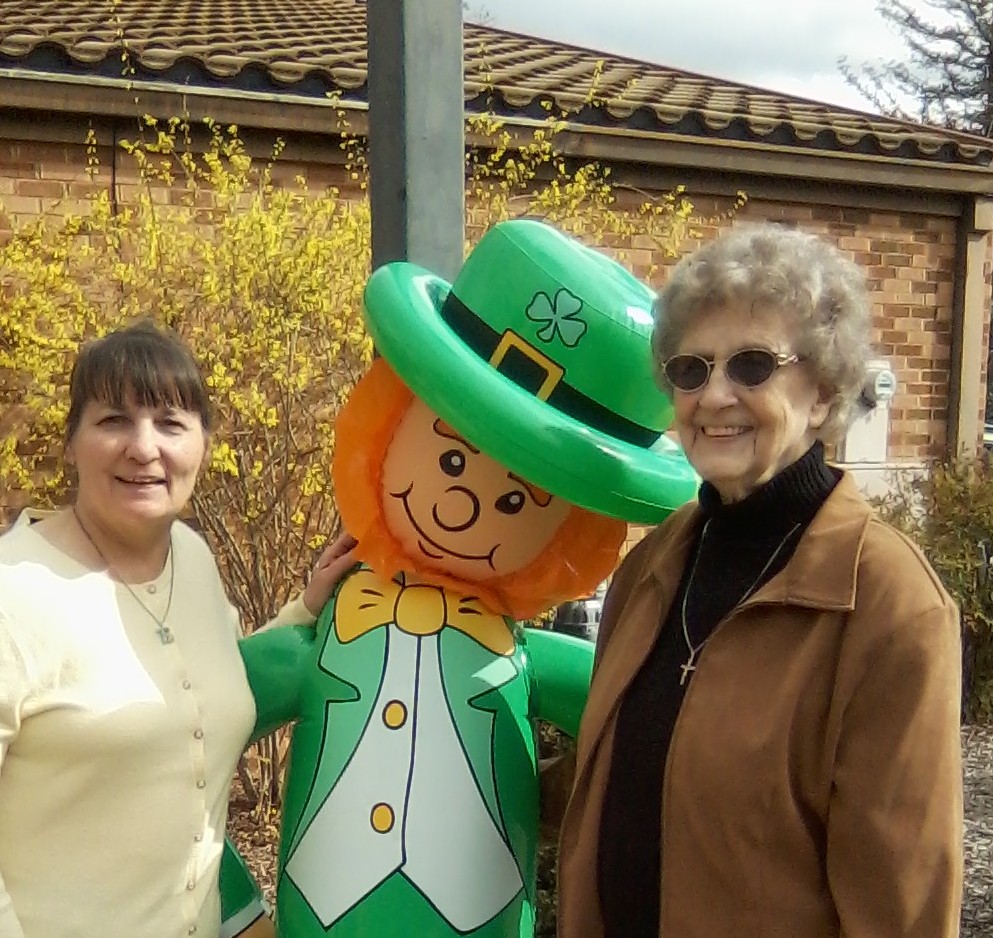 Happy St. Patrick’s Day too! Patricia Mihalic Doyle, OFS and former member Jo Ann Kemp
Happy St. Patrick’s Day too! Patricia Mihalic Doyle, OFS and former member Jo Ann Kemp
Franciscan Calendar, USA
March
2 Blessed Agnes of Prague, virgin, II Order 9 Saint Frances of Rome, religious, III Order 24 Blessed Didacusjoseph of Cadiz, priest, I OrderApril
3 Saint Benedict the Black, religious, I Order 16 Saint Bernadette Soubirous, Cordbearer of Saint Francis 17 Saint Benedict Joseph Labre, Cordbearer of Saint Francis 21 Saint Conrad of Parzham, religious, I Order 23 Blessed Giles of Assisi, religious, I Order 24 Saint Fidelis of Sigmaringen, priest and martyr, I Order 28 Blessed Luchesius, layman, III OrderMay
9 Saint Catherine of Bologna, virgin, III Order 11 Saint Ignatius of Laconi, religious, I Order 16 Saint Margaret of Cortona, member, III Order 17 Saint Pascal Baylon, religious, I Order 18 Saint Felix of Cantalice, religious, I Order 20 Saint Bernadine of Siena, priest, I Order 24 Dedication of Basilica of Saint Francis of Assisi 28 Saint Mariana of Jesus de Paredes, virgin, III Order 30 Blessed Baptista Varano, virgin, II Order 30 Saint Ferdinand, king, member, III Order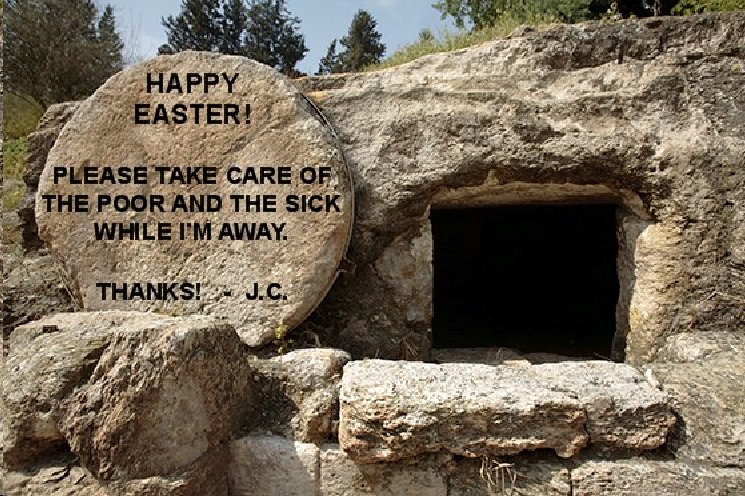 COME HOLY SPIRIT, fill the hearts of Thy faithful. Enkindle in them the fire of Thy Love. Send forth Thy Spirit and they shall be created; and you shall renew the face of the earth!
COME HOLY SPIRIT, fill the hearts of Thy faithful. Enkindle in them the fire of Thy Love. Send forth Thy Spirit and they shall be created; and you shall renew the face of the earth!
 Sainthood is not achieving a transactional acquisition. We are to become children of the living God, loving and serving one another as Jesus taught us. – OFS editor
Sainthood is not achieving a transactional acquisition. We are to become children of the living God, loving and serving one another as Jesus taught us. – OFS editor



